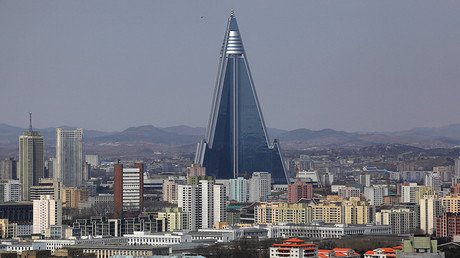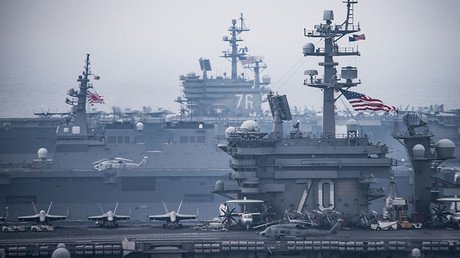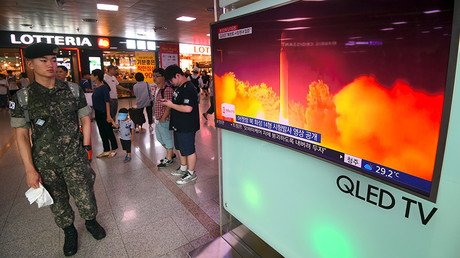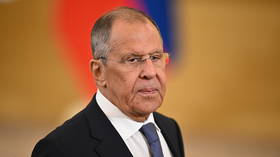Japan aiming to boost missile defense with US Aegis Ashore system – media
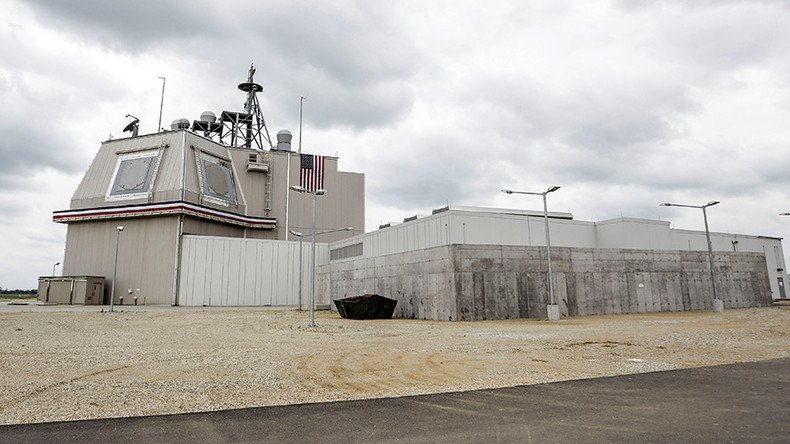
Japan wants to bolster its missile defense with the US Aegis Ashore system in light of North Korean threats, local media reported. Tokyo also plans to increase its number of Aegis-equipped destroyers.
The Japanese Defense Ministry will include costs related to the Aegis Ashore system when drafting a budgetary request for the 2018 fiscal year, NHK reported.
The Aegis Ballistic Missile Defense System (ABMD) is aimed at providing defense from short to intermediate-range missiles. It consists of BMD-capable ships as well as a ground-based configuration.
Japan is already using a land-based version of the Aegis advanced radar system. It is thought that two or three Aegis Ashore batteries would be needed to defend the whole of Japan, at a cost of 70 to 80 billion yen (US$638.5 million to $726.6 million) per battery, according to the Mainichi.
Defense Minister Itsunori Onodera is expected to explain Tokyo's plans during talks with US Defense Secretary Jim Mattis in Washington on Thursday, government sources told the Asahi Shimbun.
That meeting will follow talks between US Secretary of State Rex Tillerson and his Japanese counterpart, Taro Kono.
Meanwhile, the Japanese Defense Ministry also hopes to increase its number of Aegis-equipped destroyers from four to five by the end of the year, accelerating a previous plan which aimed to boost the number by March 2018, according to NHK.
In addition, the Defense Ministry has also decided to develop an anti-stealth radar system which could locate ballistic missiles with stealth capabilities. Work on the system will begin next fiscal year, with an expected budget request of 19.6 billion yen ($177 million), according to the Asahi Shimbun.
The reported plans come after Japanese Defense Ministry officials told Kyodo news last week that Tokyo was considering the deployment of the Patriot Advanced Capability-3 (PAC-3) system at ground Self-Defense Force bases in the western prefectures of Shimane, Hiroshima and Kochi – areas which North Korea said its missiles could fly over.
Japan's missile defense program currently includes the Maritime Self-Defense Force's (SDF) Aegis destroyers, aimed at shooting down airborne missiles, and the Air Self-Defense Force's PAC-3 system, which is aimed at countering missiles that evade Aegis interceptors.
North Korea has conducted several missile tests in recent months, which have been slammed by the US. Pyongyang strengthened its verbal threats against Washington last week, when it announced that it was developing a plan to strike Guam, which would include missiles passing over Japanese prefectures.
The threat came just hours after US President Donald Trump warned Pyongyang of "fire and fury" if its threats continued. Following the Guam threat, Trump tweeted that US military solutions were "locked and loaded."
Military solutions are now fully in place,locked and loaded,should North Korea act unwisely. Hopefully Kim Jong Un will find another path!
— Donald J. Trump (@realDonaldTrump) August 11, 2017
Pyongyang later clarified that it is ready to put off its Guam plan, while urging Washington to refrain from threats against North Korea. Trump praised the move as a “wise” decision on Wednesday.
Kim Jong Un of North Korea made a very wise and well reasoned decision. The alternative would have been both catastrophic and unacceptable!
— Donald J. Trump (@realDonaldTrump) August 16, 2017
Meanwhile, Japan has been repeatedly flexing its muscles with the US, including in joint air maneuvers southwest of the Korean Peninsula on Wednesday. In addition, annual US-Japan military drills are scheduled to take place next week, according to Reuters.
As Japan considers installing more US military hardware on its soil, Pyongyang says it feels provoked by military exercises and flyovers near the Korean Peninsula performed by the US and its allies. It previously claimed that drills in the region could provoke "actual war."
Earlier this week, North Korean leader Kim Jong-un cited the US as being “the first to bring numerous strategic nuclear equipment near us,” adding that Washington should “first make the right decision and show through actions if they wish to ease tensions on the Korean Peninsula and prevent a dangerous military clash,” KCNA state media reported.
Despite pressure to halt upcoming joint drills between the US and South Korea in the region, Joseph Dunford, chairman of the US Joint Chiefs of Staff, said earlier on Thursday that the drills were not a topic of negotiation.
The comment came after China urged that “dialogue and consultations are the only effective avenue to resolve the peninsula issue, and that military means cannot become an option.”
Those sentiments were also expressed by Russia's deputy envoy to the United Nations, Vladimir Safronkov, in July, when he took to the floor at an emergency UN Security Council session to say that “any attempts to justify a military solution are inadmissible and will lead to unpredictable consequences for the region.
"In the same manner, attempts to economically strangle North Korea are equally unacceptable, as millions of North Koreans remain in need of humanitarian aid," he said.
There has also been Japanese resistance to the deployment of US aircraft and personnel to the region, particularly in Okinawa, which hosts almost half of all US troops present in Japan. Sexual assaults blamed by locals on the US military personnel are being cited as one of the major points of discontent.
Meanwhile, Moscow and China came up with a ‘double freezing’ initiative last month which would cease any missile launches and nuclear tests by Pyongyang, as well as large-scale military exercises by Washington and Seoul. That plan was supported by Germany.
